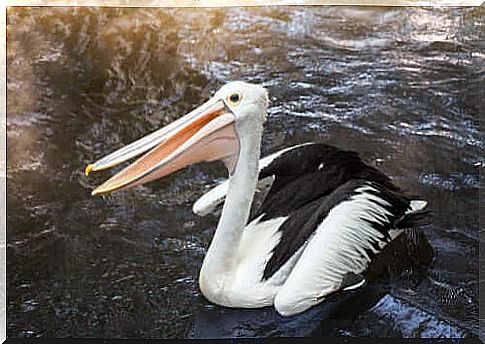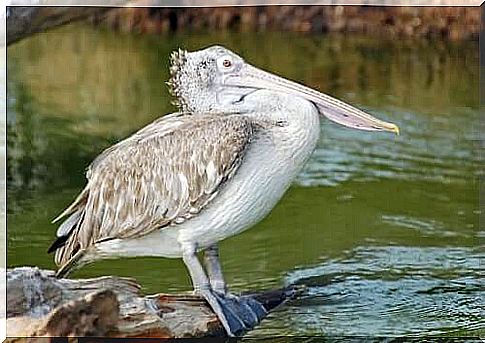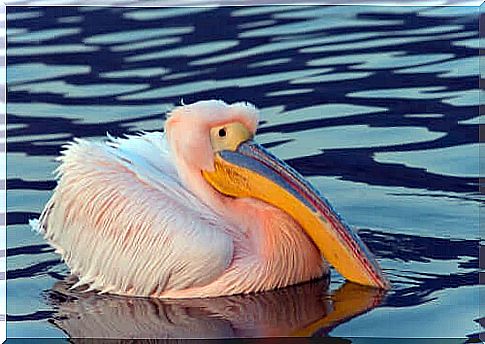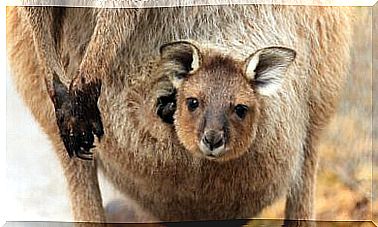Pelicans: Famous For Their Huge Beaks

The name “pelicans” is the common name given to migratory water birds that belong to the family Pelecanidae and make up the genus Pelecanus .
Pelican characteristics
The most striking feature of this genus is its long, straight and flat beak. Its upper jaw ends in a hook that curves down over the tip of the lower jaw.
The gular sac is a bag of bare skin that extends from the lower jaw to the throat and takes on a pinkish color. It has a short, rudimentary tongue and white body.
Its legs, which are short, have four webbed toes. Its tail, on the other hand, has a rounded shape. In addition, they have bare skin on both the face and throat. These birds can reach a size around two meters and weigh approximately 15 kilos.
Habitat and distribution of pelicans
Pelicans live in freshwater regions such as areas with large lakes, ponds, deltas or rivers. In addition, pelicans are also found in regions of closed or inland seas, with lagoons or coastlines. Among these seas are, for example, the Black Sea and the Aral Sea.
In geographic terms, they can be found in different regions of the countries of Southeast Europe, in regions of Southwest Asia, Africa or Australia, as well as in Central America and South America.
Pelicans feeding
Pelicans’ food is varied, although their prey par excellence is different species of fish. On the other hand, they can also eat shellfish or tadpoles. It has been observed that they can even feed on turtles.
Pelican species
In total, the genus Pelecanus comprises different species. Among them, the following can be mentioned:
Pelecanus conspicillatus
This pelican, colloquially called the Australian Pelican, resides in Australia, although its presence has also been recorded in New Guinea. The population status is stable, which is why the species has been classified as Least Concern by the IUCN.

Pelecanus crispus
This species of pelican is known as the Curly Pelican and resides in southeastern Europe, although it has also been found in India and China. As we can see, it is one of the rarest species of pelicans that exists.

Pelecanus philippensis
This species of pelican is known as a gray pelican. It can be seen in many countries, from India to the Philippines, and also from China to Indonesia.

Pelecanus occidentalis
Brown Pelican is the name given to this species of pelican. It can be found in the coastal area that generally includes North America, Central America and South America. More specifically, it can be seen in northern South America, the Galapagos Islands, North America and in Caribe.

This species has been classified by the IUCN as a species of least concern. In addition, an increase in the number of specimens in the brown pelican populations was recorded.
Pelecanus onocrotalus
This pelican is known as the common pelican and has a somewhat scattered distribution. It can be observed in the eastern Mediterranean regions, towards the eastern area. It has also been found in Indochina and the Malay Peninsula, as well as South Africa.

Pelecanus Thagus
This particular species of pelican is known as the Peruvian pelican. It is found on the Pacific coast starting in Ecuador and Peru and ending in southern Chile.

Fun Facts About Pelicans
Pelicans have played an important role throughout history. In Ancient Egypt, the pelican was also mentioned and was related to death.
During the Middle Ages, it was believed that they sacrificed themselves to such an extent for their young that they would give them their own blood to feed on if there was no more food. Hence, they were used in the Christian religion as a symbol of the Passion of Christ.
Queen Elizabeth I of England took the pelican as a symbol. In ‘ The Portrait of the Pelican ‘, the queen wears the medieval symbol of the pelican on her chest.
This idea of ’self-sacrifice’ seems to have emerged from the gesture performed by the pelicans to empty the gular sac completely. To do this, they bring their beaks to their chests and it may look like they are hurting themselves. Another option is that pelicans usually keep their beak on their chest while they are at rest.









